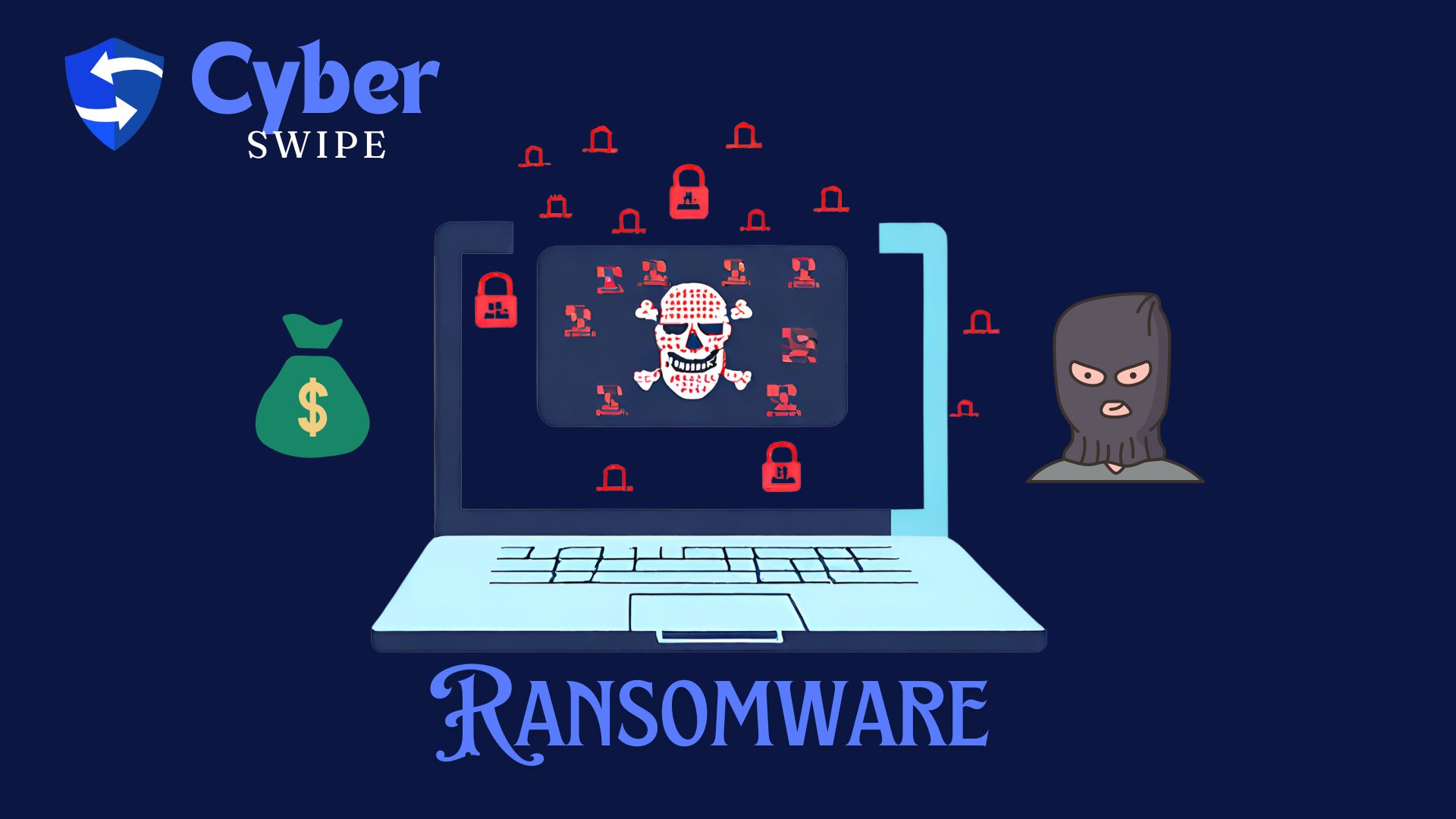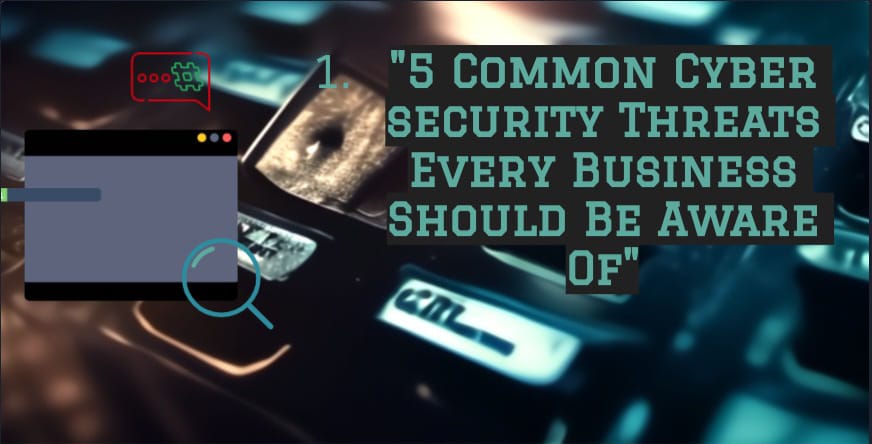Learn about the increasing threat of ransomware attacks and how to protect your data from cyber criminals.
Introduction
Ransomware is like the digital version of a hostage situation, but instead of people, the victims are your personal or organisation data. Imagine turning on your computer to find all your files locked, with a demand for payment to restore access. This type of cyber attack has become increasingly common and can target anyone—from small businesses to large enterprises, and even individuals. Understanding what ransomware is and recognising the threat it poses is the first step towards defending against it.

Definition of Ransomware
Ransomware is a type of malicious software designed by cyber criminals to encrypt data on a device, making it unusable. The attackers then demand a ransom from the victim to restore access to the data upon payment. Users are often left in a precarious position: pay the ransom and hope their data is decrypted or lose their data permanently if backups are not available.
Common Tactics Used by Cyber Criminals
Cyber criminals use various tactics to deploy ransomware. These include phishing emails, where victims are tricked into clicking on malicious links, social engineering, and exploiting security vulnerabilities in software. Once installed, the ransomware locks the system, displays a demand note, and threatens the user to comply with the payment instructions.
Impact of Ransomware Attacks
Examples of High-Profile Ransomware Attacks
Previous incidents have shown just how disruptive ransomware can be. For instance, the WannaCry attack in 2017 affected thousands of organizations worldwide, including hospitals and government agencies, by exploiting older Windows systems. Another significant strike was the NotPetya attack, which mainly targeted Ukrainian institutions but had global consequences.
Financial Cost of Ransomware Attacks
The financial impact of ransomware can be devastating. The cost of ransom payments is just the beginning. Victims also face downtime, loss of business, restoration processes, and sometimes, legal complications that require further financial outlay. Additionally, organizations might need to invest in upgrading their cybersecurity measures, adding another layer of expense.
Reputational Damage Due to Data Breaches
Beyond the immediate financial losses, ransomware attacks can have long-lasting effects on an organization’s reputation. Customers and partners may lose trust in a company’s ability to safeguard data, potentially leading to decreased business. The negative publicity can also impact stock prices and attract unwanted regulatory attention.
How Ransomware Works
Encryption Process in Ransomware Attacks
Ransomware infiltrates systems and encrypts files, essentially locking users out of their data. The encryption is highly secure, and without a decryption key, accessing the encrypted files is nearly impossible. Cyber criminals meticulously execute this process, targeting specific data that cripples critical operations or contains sensitive information to ensure a higher likelihood of receiving the ransom payment.
Ransom Demands and Payment Methods
Once the data is encrypted, attackers then demand a ransom from the victim to unlock it. They typically ask for payment in cryptocurrencies, such as Bitcoin, due to its untraceable nature. Instructions on how to pay the ransom are usually included in a note left on the infected computer, pushing victims to act quickly to restore their systems.
Challenges in Tracing Cyber Criminals
The anonymity features in the use of cryptocurrencies and the complex layers of the internet criminals use to hide their activities make it extremely difficult to trace them. Law enforcement agencies often face significant challenges in tracking down the perpetrators, contributing to the ongoing prevalence of ransomware attacks worldwide.
Protection Against Ransomware
Importance of Regular Data Backups
One critical strategy to guard against ransomware is to regularly back up all important data. Having backups means you can restore your information without needing to pay the ransom. It’s essential to ensure backups are stored in a location not connected to your main network to avoid them being compromised during an attack.
Updating Security Software and Patches
Keeping security software up-to-date is crucial in defending against ransomware. Cybercriminals often exploit vulnerabilities in outdated software to gain access to systems. Regularly installing security patches and updates minimizes these vulnerabilities, providing stronger protection against attacks.
Employee Training on Recognizing Phishing Attempts
Training employees to recognize and avoid phishing attempts is a vital line of defense. Phishing emails are a common method for hackers to deliver ransomware. By educating staff on what suspicious links and emails look like and encouraging them to report them, businesses can significantly reduce the risk of a successful ransomware attack.
Responding to a Ransomware Attack
Steps to Take When Infected with Ransomware
If your system gets hit by ransomware, it’s crucial to act promptly and efficiently to mitigate damage. First, isolate the affected device from your network to prevent the spread of the infection. Disconnect it from the internet and any network connections, including WiFi and Bluetooth. Secondly, identify the type of ransomware to understand what you’re dealing with; this will help in determining if decryption tools are available. Do not pay the ransom as it does not guarantee that your data will be decrypted and only encourages further crimes. Lastly, consult cybersecurity professionals who can help you navigate the situation and explore recovery options.
Reporting Ransomware Attacks to Authorities
It’s important to report any ransomware incident to the proper authorities. This helps in tracking down the perpetrators and also aids in understanding attack vectors and trends which might help others. In the United States, this can be done through local law enforcement or the FBI’s Internet Crime Complaint Center (IC3). Be ready to provide as much detail as possible about the attack, including the ransom note, any correspondence with the cyber criminals, and evidence of the malware itself if available.
Evolution of Ransomware Tactics
Ransomware tactics are constantly evolving as cybercriminals seek new ways to extort money. They are increasingly incorporating sophisticated methods like “double extortion,” where they not only encrypt data but also threaten to release it publicly if the ransom isn’t paid. Additionally, attackers are leveraging vulnerabilities in newer technologies such as cloud services and IoT devices to execute attacks. This continuous evolution requires vigilant and adaptive cybersecurity measures.
Industry Efforts to Combat Ransomware Attacks
The cybersecurity industry is tirelessly working on multiple fronts to combat ransomware. One approach is the development of advanced anti-ransomware technologies, which can detect and block attacks before they encrypt data. Furthermore, there is a significant push towards education and training to help businesses and individuals understand and prepare for ransomware risks. Lastly, collaborations between tech companies and government agencies are strengthening, focusing on sharing information and resources to enhance response times and develop better defensive strategies against these cyber threats.
Conclusion
Ransomware is not just a fleeting cyber threat but a persistent challenge that continues to evolve with technological advancements. Awareness and proactive measures are our best bet against these crippling attacks. Regular backups, updated security programs, and ongoing education about phishing tactics are essential. Remember, investing in robust cyber-security measures and maintaining a vigilant stance can save you from significant financial and reputation damage. Stay informed, stay secure, and let’s keep our data safe together.





Hey there! I could have sworn I’ve been to this site before but after browsing through some of the post I realized it’s new to me. Anyways, I’m definitely happy I found it and I’ll be bookmarking and checking back often!